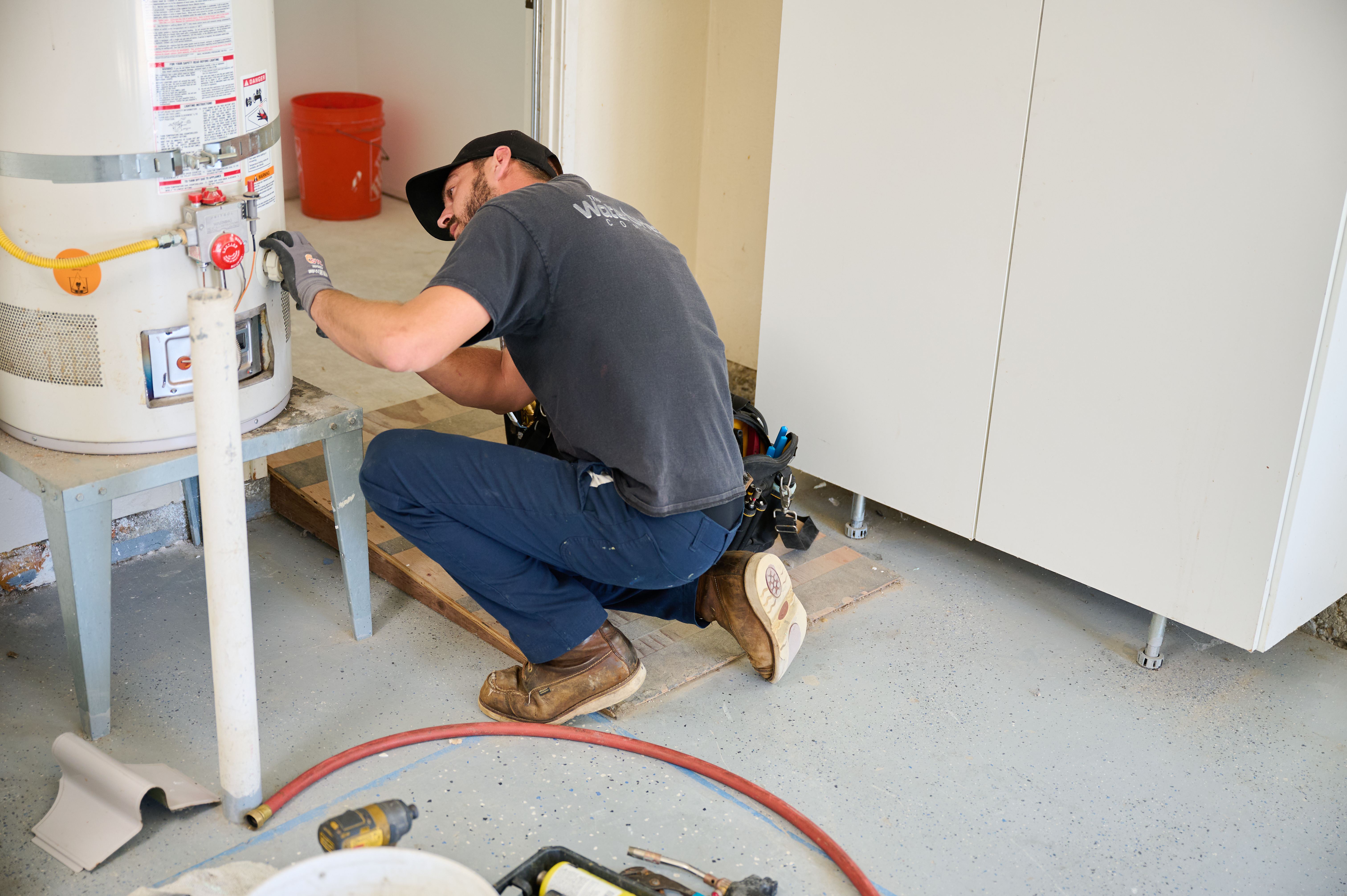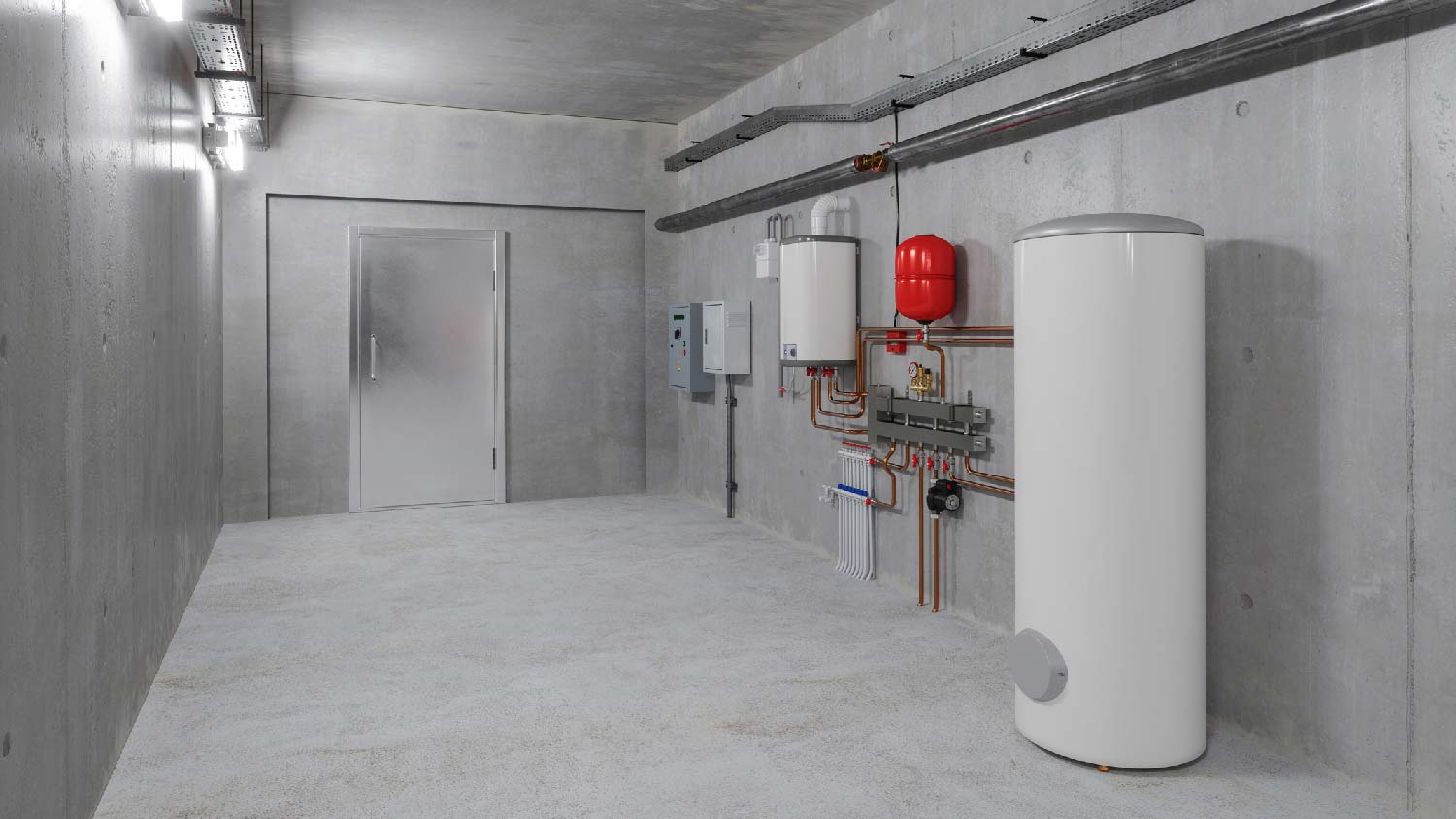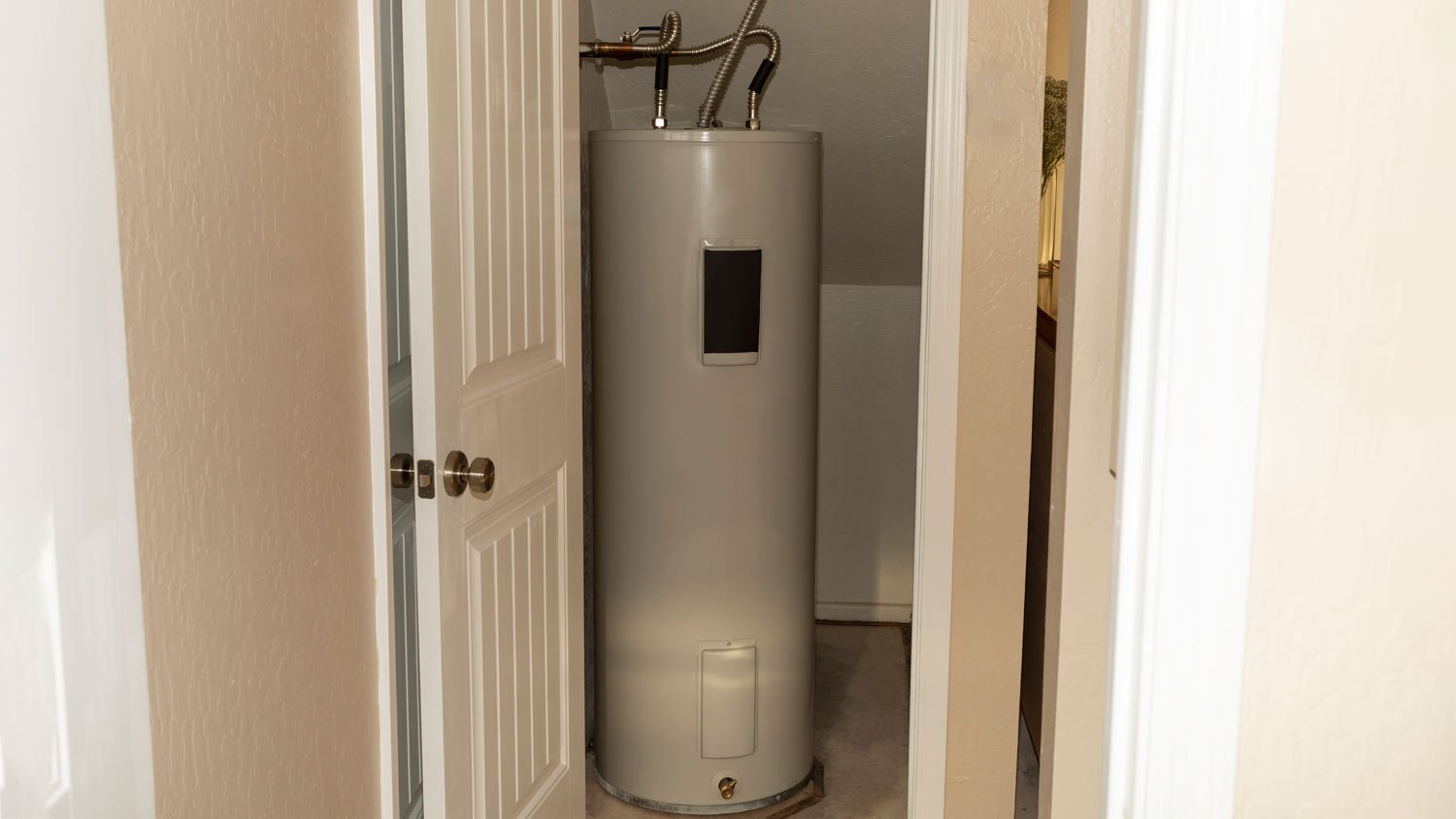
Running out of hot water too quickly or hearing strange noises when you call for hot water? Use this water heater repair cost guide to see what a fix will cost in Atlanta, GA.
Fixing your hot water problems may be as simple as pushing a button


Sometimes, we take for granted that our faucets give us hot water on demand. It’s something we hardly think twice about—until it stops working. If your shower is suddenly ice cold, don’t rush to call a plumber. In some cases, you can solve the problem in minutes at no cost with the push of a button. This guide breaks down why water heaters quit and how to reset them fast.
Some DIY repairs are great for saving money and sharpening your skills, but leave larger jobs like water heater repair to the pros. An experienced hand can ensure the task is completed safely and will prevent further damage.
Before you look at your water heater, check your electrical panel. You should be able to find a circuit breaker labeled for your water heater. If the breaker is in the "on" position, flip it off. This will cut off power to the unit and allow you to troubleshoot safely.
If the breaker for your water heater is already in the "off" position, flip it on and wait a few minutes. If it stays on, go to your water heater unit and listen for the sound of bubbling water. This is a sign that it's heating your water so you can take a warm shower again soon.
However, if the breaker trips again soon after you turn it on, you likely have an electrical issue and should call an electrician near you. If you can’t identify your water heater's breaker, flip all breakers off or contact an electrician to assist you.
For urgent water heater issues, you can also contact an emergency plumber to come by and handle the problem. Emergency plumbers cost between $60 and $600 per hour but can give you major peace of mind knowing your home is safe from dangerous water heater problems.

Look around your water heater with a flashlight for signs of a leak or visibly damaged wiring. These are serious issues that you’ll want to have a pro address. If you don’t see any obvious problems, look for the hot water reset button. Most water heaters will have a reset button, though some gas water heaters require you to relight the pilot light.
This button may be near the unit’s thermostat, but most water heaters have a removable metal panel on the side that houses the button. Use a screwdriver to remove this panel.
If there is insulation behind the panel, check it for moisture. Damp insulation could be from a leak and is a sign of a leaking or failing water heater that you'll likely need to replace soon. Call a plumber near you, explain the issue, and get it solved promptly.
If you don’t detect any issues with your water heater, remove the insulation to reveal the hot water reset button. Firmly press the button. It will usually click, but this can vary from unit to unit.

Put the insulation back in place and screw the metal panel back in. Return to your electrical panel and flip the circuit breaker for the water heater back to the "on" position.
Return to your water heater and listen for a bubbling noise, which indicates it's starting to heat your water. Run a sink faucet on hot to see if hot water comes out. Also, make sure the water is not too hot. If so, your water heater may have tripped due to an electrical issue or defective thermostat. You'll need to call a water heater specialist to resolve these problems.
If your water heater is working and hot water has been restored, you’ve successfully reset your water heater.
Resetting a water heater is simple, quick, costs nothing, and requires very few tools. Unless you cannot turn off the power to your water heater, it’s a job you can safely do yourself.
However, if you attempt to reset your water heater and it either continues to shut off or refuses to work at all, you may have a bigger underlying issue. This isn’t always the case, however. If you haven’t conducted a routine water heater inspection or haven’t flushed your water heater in over a year, hard water buildup could cause your water heater to short circuit. Flushing your water heater costs around $160 on average and can prolong the lifespan of your unit.
If you’re on top of maintaining your water heater and still can’t successfully reset the water heater, call a water heater professional right away. You may need to pay the cost of water heater repairs, which is $600 on average, but that price is well worth your safety and the ability to run hot water in your home again.
It’s important to understand water heater components when handling any sort of troubleshooting yourself. Many water heaters have a high-limit switch or reset button. This button is designed to trip when your water heater malfunctions, protecting your household from being burned by scalding water. The reset button may occasionally trip—often during a power surge or thunderstorm—but sometimes at random. In these cases, you can reset it on your own.
However, a water heater that trips constantly may have more serious reasons for doing so. If your water heater fails weekly, daily, or even more frequently, it might be caused by the following:
A malfunctioning reset button or high-limit switch
Loose or damaged wiring
These issues can be dangerous to try and handle on your own, so call a water heater repair service near you for help. Also, note that water heaters last about 10 years, so if yours is older than that, you might need a full replacement, which should be done by a professional.
From average costs to expert advice, get all the answers you need to get your job done.

Running out of hot water too quickly or hearing strange noises when you call for hot water? Use this water heater repair cost guide to see what a fix will cost in Atlanta, GA.

Tankless water heater costs in Atlanta, GA depend on the size of your water heater, location, fuel type, and more. Keep reading to calculate your expenses.

Learn all the factors that influence the cost to install a heat pump water heater at your home.

Learning how to replace a water heater in your home is a challenging task that most people will want to leave to the professionals. But if you’ve got expert-level skills, here’s what to do.

Hot water expansion tanks help protect your home by preventing an overflow of your water tank. Learn why you may need one, how much they cost, and their benefits.

Hybrid water heaters will have you weighing high initial costs versus long-term savings. Is it the right option for you? Explore the pros and cons of hybrid water heaters.